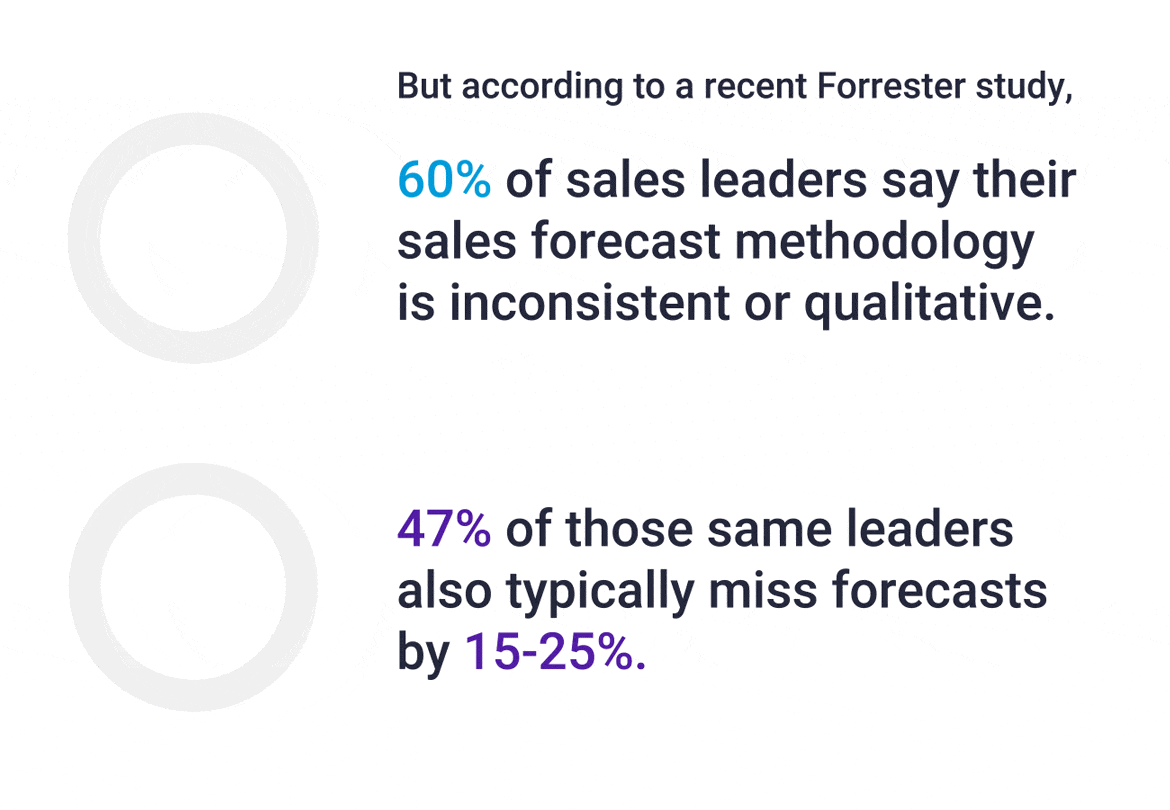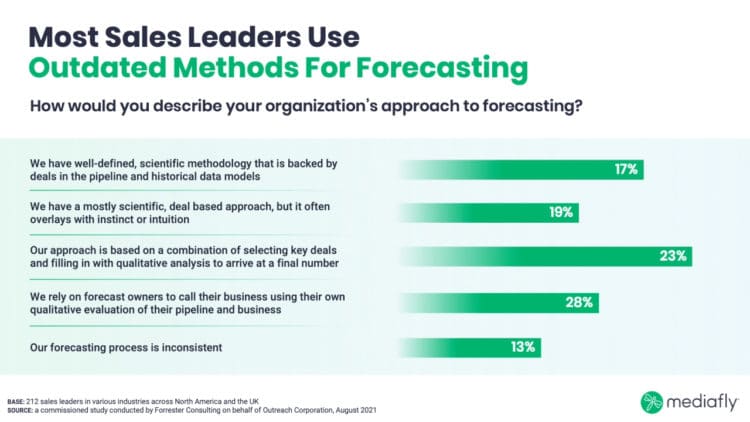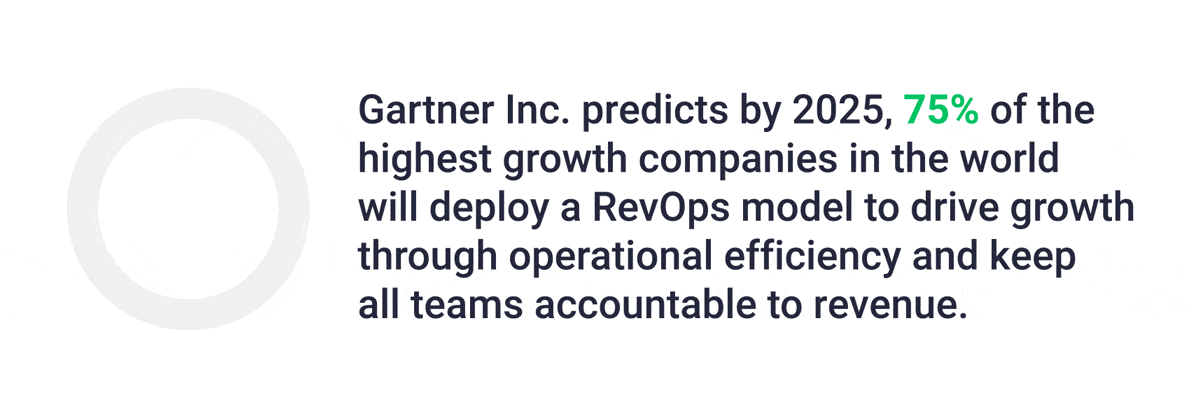“Improve sales forecast accuracy” is a top goal for many organizations in 2022. And why wouldn’t it be? Your sales forecast influences everything in your business, from hiring to resource allocation to revenue projections and production capacity decisions.

But today’s sales forecasting methodologies are not only inconsistent and ineffective, they’re also time-consuming as 25% of sales leaders report spending over 100 hours per week on forecasting.²
Where are sales leaders going wrong, and how can they improve sales forecast accuracy?
The Most Common Sales Forecasting Mistakes
The unfortunate truth is that most sales leaders are still using outdated methods for sales forecasting. They rely on qualitative evidence from sellers in dreaded sales forecasting meetings to determine whether a deal will close. They rely more on instinct or intuition than a scientific, data-backed approach. It’s what Tom Pisello, Mediafly’s Chief Evangelist, calls “voodoo forecasting.” And it’s killing their ability to improve sales forecast accuracy and hit revenue targets.

The Rise of RevOps
Fortunately, many companies recognize the need to change. To support that change, they’re adopting a RevOps model at an unprecedented pace. Gartner Inc. predicts by 2025, 75% of the highest growth companies in the world will deploy a RevOps model to drive growth through operational efficiency and keep all teams – not just sales – accountable to revenue.

A RevOps model takes an end-to-end approach to drive predictable revenue growth through a combination of sales, marketing, and post-sale alignment, increased transparency, and rigorous execution.
RevOps teams deploy revenue intelligence software to intelligently capture multichannel sales activity and engagement, content engagement, and intent data and provide prescriptive and actionable insights across the customer lifecycle.
According to Forrester, “revenue intelligence solutions capture human engagement activity between buyers and sellers and automatically upload that data to CRM platforms…These insights enable robust management of forecasting and revenue performance while also providing greater transparency and accountability.”
What’s Required to Improve Sales Forecast Accuracy
It’s important to note that while revenue intelligence solutions have the power to help you collect and analyze data and insights, you’ll only succeed at improving sales accuracy if you collate and leverage the right data. To accurately determine deal health, you’ll need to consider all of the following data sets:
- Buyer Intent – Behavioral signals that identify buyers in an active buying cycle
- Content Engagement – Insights into how buyers consume and share content in and outside the sales meeting
- Sales Engagement – Data and insights from every buyer touchpoint across the buyer journey
- Value Engagement – Data outlining the buyer’s most pressing business challenge, the cost of ignoring it, and the value they stand to gain from fixing the problem
- Conversation Intelligence – Real-time insights from sales meetings and calls
Because revenue intelligence solutions are powered by artificial intelligence and machine learning, the technologies take this data and transform it into actionable insights and prescriptive recommendations. This saves sales leaders a tremendous amount of time and takes the guesswork out of determining whether or not a deal will close.
A 360-Degree View of Deal Health
If you are already leveraging some of the technologies and data sets outlined above to help improve sales forecast accuracy, congratulations! You’re on the right track. The more/better human activity you can capture, the bigger your data sets, the more meaningful your business outcomes will be.
But keep in mind, capturing disparate data in disparate solutions leveraged by disparate business groups can slow your progress toward improving sales forecast accuracy and driving more revenue. The most successful companies combine the power of sales activity and engagement, content engagement, and buyer intent data for a complete view of deal health.
Interested in more actionable advice about how to improve sales forecast accuracy? Check out the on-demand recording of our recent webinar featuring Mary Shea, VP Global Innovation Evangelist at Outreach, Are You Struggling to Forecast & Hit Your Sales Targets this Quarter? You Are Not Alone.
Sources:
- A commissioned study conducted by Forrester Consulting on behalf of Outreach Corporation, August 2021
- Linkedin poll conducted by Outreach with 65 respondents, September 2021

Comments are closed.